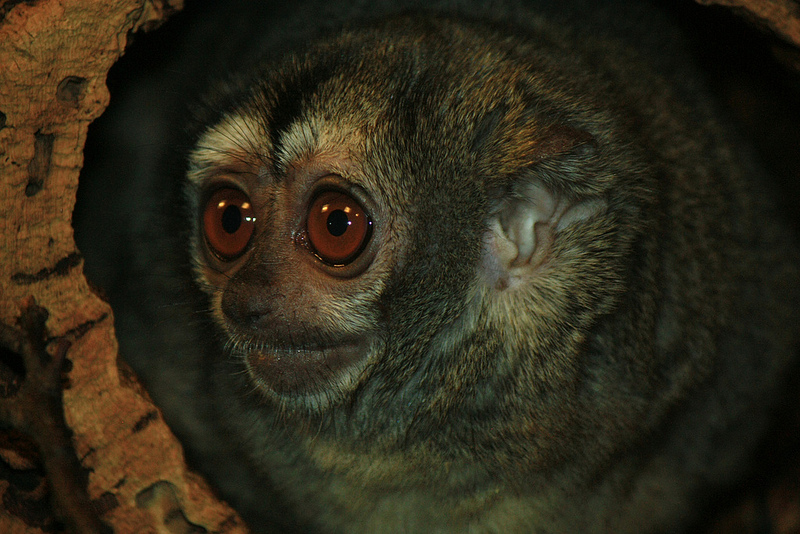
For owl monkeys, it pays to be faithful. Monkeys that stick with their primary mate produce more children than those who wind up with another monkey, new research finds.
The results suggest that the evolution of pair bonds may have improved reproductive fitness in this species, and may even shed light on why monogamy emerged in humans.
"Monogamy makes sense for these primates, because the male who sticks to a female is certain about the paternity of the young, and so he invests in their care," said study co-author Eduardo Fernandez-Duque, a University of Pennsylvania anthropologist, in a statement. "The female benefits from shared provisioning of care which may help her reduce the burden of pregnancy and lactation."
The new insights, published today (Jan. 23) in the journal PLoS One, come from studying 154 wild owl monkeys in Argentina over 16 years.
Monogamous species
Owl monkeys typically live in a nuclear family with a pair-bonded couple and their young living together. Youngsters leave the nest around age 3 or 4. [Image Gallery: Cute Gelada Monkeys]
But every so often, drifters butt in on the pair-bonded couple. Those "floater" monkeys may be male or female, and the disruption is violent — even fatal for some of the monkeys involved.
Get the world’s most fascinating discoveries delivered straight to your inbox.
Over the last 16 years, Fernandez-Duque documented 27 female and 23 male floaters that disrupted pair-bonded monkeys.
Interestingly, monkeys who stuck with one partner over a decade produced 25 percent more baby monkeys than those who had more partners.
"What we're showing is that if you manage to stay with the same partner you produce more infants than if you're forced to change partners," Fernandez-Duque said.
The findings suggest that monogamy has its benefits for this species.
Though they are not sure why monogamous couples beat out disrupted pairs, one possibility is that female owl monkeys only conceive between March and May. And because both male and female monkeys take a little time to get to know their new partners before mating, pair disruptions could lose critical months during that fertile window.
The findings could also have implications for why humans are often monogamous.
"Call it love, call it friendship, call it marriage, there is something in our biology that leads to this enduring, emotional bond between two individuals that is widespread among human societies," Fernandez-Duque said.
Follow LiveScience on Twitter @livescience. We're also on Facebook & Google+.

Tia is the editor-in-chief (premium) and was formerly managing editor and senior writer for Live Science. Her work has appeared in Scientific American, Wired.com, Science News and other outlets. She holds a master's degree in bioengineering from the University of Washington, a graduate certificate in science writing from UC Santa Cruz and a bachelor's degree in mechanical engineering from the University of Texas at Austin. Tia was part of a team at the Milwaukee Journal Sentinel that published the Empty Cradles series on preterm births, which won multiple awards, including the 2012 Casey Medal for Meritorious Journalism.
